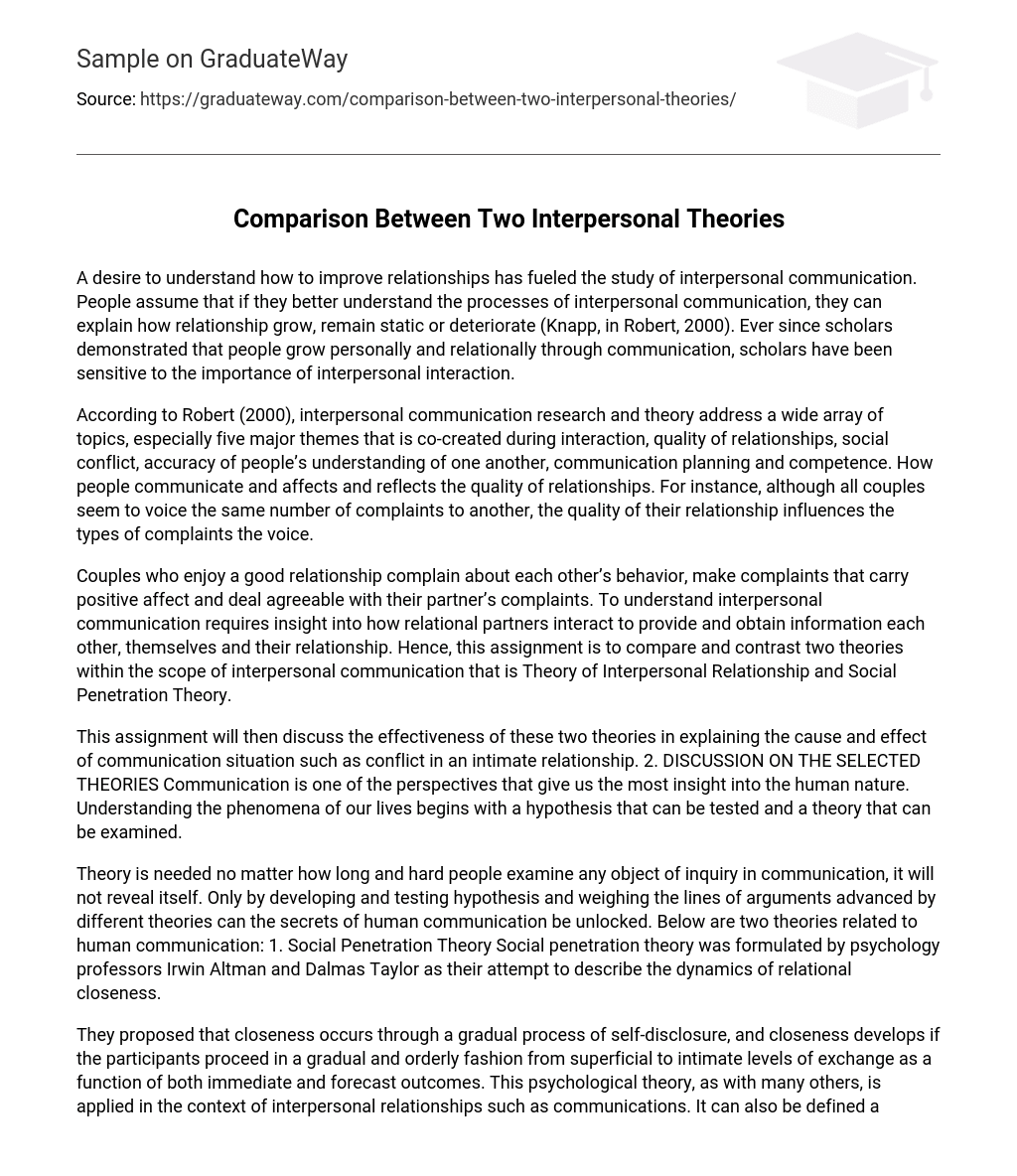A curiosity to enhance relationships has driven the exploration of interpersonal communication. It is believed that by comprehending the mechanisms behind interpersonal communication, one can decipher the evolution, stability, or decline of relationships (Knapp, in Robert, 2000). Since researchers highlighted how people develop both personally and relationally through communication, they have recognized the significance of interpersonal interaction.
Robert (2000) states that interpersonal communication research and theory cover a diverse range of topics, particularly five major themes: co-creation during interaction, relationship quality, social conflict, accuracy of understanding, and communication planning and competence. The way people communicate impacts and mirrors the quality of relationships. For example, even if all couples express the same number of complaints to each other, the quality of their relationship determines the nature of these complaints.
Couples in healthy relationships engage in positive complaints about each other’s behavior and respond agreeably to their partner’s complaints. Understanding interpersonal communication involves examining how partners exchange information about themselves and their relationship. Thus, this assignment aims to compare and contrast two theories in the field of interpersonal communication: the Theory of Interpersonal Relationship and the Social Penetration Theory.
This assignment will examine the effectiveness of two theories in explaining the cause and effect of communication situations, such as conflict, in intimate relationships. It will also discuss the selected theories and their contribution to our understanding of human nature. Communication is a key perspective that provides valuable insight into our lives, and it helps us explore and understand various phenomena through hypothesis testing and theory examination.
No matter how much time and effort is spent examining any object of inquiry in communication, it will not reveal itself without theory. The secrets of human communication can only be unlocked by developing and testing hypotheses and evaluating the arguments presented by various theories. Here are two theories concerning human communication:
1. Social Penetration Theory: This theory was formulated by psychology professors Irwin Altman and Dalmas Taylor. It aims to explain the dynamics of relational closeness.
The theory suggests that closeness is achieved by gradually revealing oneself, and that closeness is established when participants follow a structured progression from surface-level to deep-level interactions. This theory is commonly used to understand interpersonal relationships, specifically in communication. It can also be described as the process of developing a deeper connection with someone through sharing personal information and showing vulnerability.
Self-disclosure refers to the act of voluntarily sharing personal information, including history, preferences, attitudes, feelings, values, and secrets with someone else. It involves revealing more about ourselves, both consciously and unconsciously. According to Altman and Taylor, self-disclosure is essential for developing close relationships as it allows individuals to become vulnerable and open up to one another. Vulnerability can manifest in different ways, such as giving away personal possessions like a dresser drawer to a partner.





